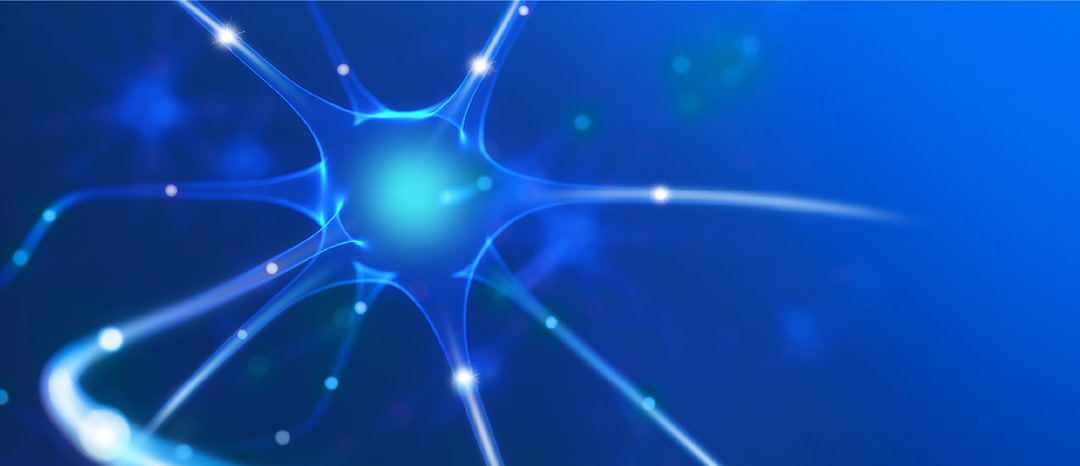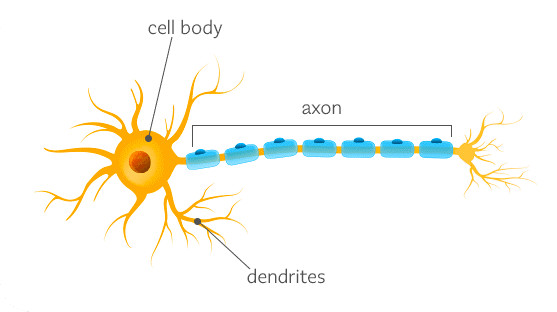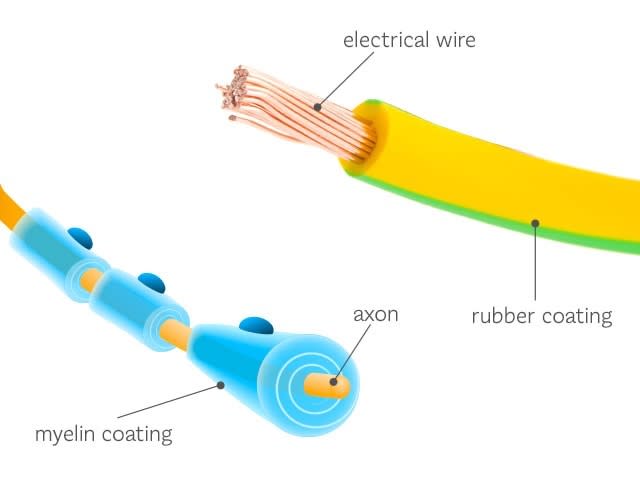
What Is the Nervous System and How Does It Function?
1
The nervous system is an important part of your body—a network of special fibers that does the vital work of transmitting and processing signals from our brain and all over our body.
It monitors and coordinates voluntary actions, like walking and talking, as well as involuntary functions, like your heartbeat, breathing and digestion.
Your five senses—touch, sight, smell, hearing and taste—are all dependent on nerves. It’s also your nerves that help you control the muscles necessary for responding to these stimuli. For example when you pull your hand away from a hot pan, or reach out for another spoonful of tasty food.
What Is the Structure of the Nervous System?
1
There are many divisions of the nervous system—each with its own subdivisions—but in the broadest sense, the nervous system can be divided into two main parts:
The Central Nervous System
The central nervous system (CNS) consists of the brain and the spinal cord:
The brain is responsible for thought, processing the information received from the rest of the nervous system, and sending out the signals—via the nerves—to control your actions and bodily functions.
The spinal cord is your very own information superhighway—the main channel for communication between the brain and all the other parts of your body via the peripheral nervous system.
The Peripheral Nervous System
The peripheral nervous system (PNS) consists of millions of nerves that branch out from the spinal cord to connect with muscles or receptors throughout your body. You could picture it as a network of electrical wires or data transmission lines connecting your brain and body, allowing them to communicate. Damage to the peripheral nervous system is called peripheral neuropathy.
In terms of function, the peripheral nervous system can be further divided into two main parts:
The somatic nervous system² relays sensory information like touch and smell to the brain from sensory cells all around your body. It’s also responsible for controlling the muscles that perform voluntary movements such as talking or moving your hands and legs.
There are two types of nerves in the somatic nervous system:
Sensory nerves. The sensory nerves transmit signals to your brain from sensory receptors all over your body. These nerves are what help you to sense heat, cold, pain, smells and other sensations.
Motor nerves. These types of nerves help to control the muscles used for things like walking, talking, dancing, and anything else that you might do consciously and deliberately. For example, when you tapped or clicked to read this article, it was your motor nerves that carried the signals from your brain to the muscles that moved your hand and fingers.
The autonomic nervous system is responsible for regulating functions that you don’t consciously control.
Autonomic nerves send and receive the signals necessary for controlling unconscious, automatic functions such as your heartbeat, breathing, bladder control or the sweat glands that help to keep your body temperature within the normal range.
They are also responsible for raising your heart rate and blood pressure in an emergency (the ‘fight or flight’ response). The part of the nervous system that performs these functions is sometimes referred to as the sympathetic nervous system.
Other autonomic nerves serve to relax your body (the parasympathetic nervous system) or regulate digestive processes (the enteric nervous system).
What Are Nerves and How Do They Work?
3
If you were to look at the nerves in your peripheral nervous system under a powerful microscope, you would see bundles of elongated nerve fibers wrapped in a protective coating known as the myelin sheath.
Your nerves are made up of nerve cells called neurons, each consisting of:
A cell body. This is the central part of the nerve cell.
An axon. This long, wire-like extension transmits electric signals from one cell to the next. It is protected by a fatty coating called the myelin sheath.
Dendrites. These branch-like appendages have the job of receiving incoming signals from neighboring nerve cells.
Myelin sheath. The axon of certain nerve cells is protected by a fatty coating called the myelin sheath. Besides protecting the nerve fiber, it also helps speed up the transmission of nerve signals.
The Parts of a Nerve Cell*³

*Simplified representation
How Do Nerve Cells Transmit Signals?
3
Nerve cells send their signals as electrical impulses that travel from the cell body, along the axon. At the end of the axon, these impulses are converted into a chemical signal known as a neurotransmitter, which crosses the gap—known as a synapse—between the axon and a dendrite of the neighboring nerve cell.
The dendrite of the receiving nerve cell converts the chemical signal back into an electrical impulse and sends it to the next cell in the same way—via its own axon.
The Myelin Sheath
<sup>4</sup>
The myelin sheath is the protective coating surrounding the axon of certain nerve cells. If you compare the nerve to an electrical wire, then the nerve fiber is a bit like the copper strand in the center, and the myelin sheath serves a similar function to the rubber insulation that coats an electrical wire.
Besides protecting the nerve fiber, the myelin sheath also helps signals to move faster along the axon. The gaps in the myelin sheath help to speed up the signals as they travel along the axon of the nerve cell.
The myelin sheath has a vital role in protecting the nerve fiber, and damage to this part of the nerve cell is a common cause of peripheral neuropathy, especially in people who have a vitamin B12 deficiency.
The Myelin Sheath

How nerves send and receive signals
Every time a neuron needs to communicate with another neuron:
An electric signal sent from the nerve travels the length of its axon.
When the signal reaches the end of the axon, it is converted into a chemical signal called a neurotransmitter.
The neurotransmitter is released into the space (known as a synapse) between the axon of one nerve cell and the dendrite (a tentacle-like protrusion) of the neighboring nerve cell.
In the dendrite, the chemical signal is converted back into an electrical signal. It passes through the neuron and out through the axon in the same way, travelling from nerve cell to nerve cell until it reaches its destination.
In Short
The nervous system is a complex and vital organ, so it’s important to take care of it. Any damage to the network of nerve cells and fibers can disrupt the signals being sent around your body, causing the symptoms of peripheral neuropathy such as pamamanhid (numbness) in the hands or feet, pangangalay (muscle weakness), tusok-tusok (tingling) or poor balance and coordination.
If you’d like to learn more, read 10 fascinating facts about the nervous system. If you’re concerned about the health of your nervous system or want to find out more about nerve care, ask your doctor about the best way to prevent, treat or manage the symptoms of peripheral neuropathy.


